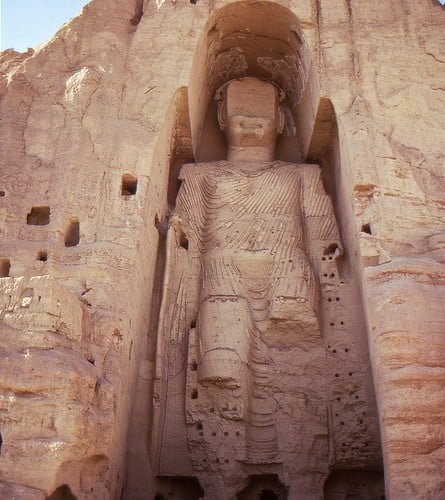consultation of religious & elders about parents
The two colossal Bamiyan Buddhas stood as arguably the most important archaeological site in Afghanistan for well over a thousand years. They were the largest standing Buddha figures in the world. Then, in a matter of days in the spring of 2001, members of the Taliban destroyed the Buddha images carved into a cliff face in the Bamiyan Valley. In this series of three slides, learn about the history of the Buddhas, their sudden
The smaller Buddha, pictured here, stood about 38 meters (125 feet) tall. It was carved from the mountainside around 550 CE, according to radiocarbon dating. To the east, the larger Buddha stood some 55 meters (180 feet) high and was carved a bit later, likely around 615 CE. Each Buddha stood in a niche, still attached to the back wall along their robes, but with free-standing feet and legs so that pilgrims could circumambulate around them.
The stone cores of the statues originally were covered with clay and then with a brightly covered clay slip on the outside. When the region was actively Buddhist, visitors' reports suggest that at least the smaller Buddha was decorated with gemstones and enough bronze plating to make it seem as if it was made
entirely of bronze or gold, rather than stone and clay. Both faces were likely rendered in clay attached to wooden scaffolding; the blank, featureless stone core underneath was all that remained by the 19th century, giving the Bamiyan Buddhas a very unsettling appearance to foreign travelers who encountered them.
The Buddhas appear to have been the work of the Gandhara civilization, showing some Greco-Roman artistic influence in the clinging drape of the robes. Small niches around the statues hosted pilgrims and monks; many of them feature brightly-painted wall and ceiling art illustrating scenes from the life and teachings of the Buddha. In addition to the two tall standing figures, numerous smaller seated Buddhas are carved into the cliff. In 2008, archaeologists rediscovered a buried sleeping Buddha figure, 19 meters (62 feet) long, at the foot of the mountainside.
The Bamiyan region remained predominantly Buddhist up until the 9th century. Islam gradually displaced Buddhism in the area because it offered easier trading relations with surrounding Muslim states. In 1221, Genghis Khan invaded the Bamiyan Valley, wiping out the population, but leaving the Buddhas undamaged. Genetic testing confirms that the Hazara people who now live in Bamiyan are descended from the Mongols.
Most Muslim rulers and travelers in the area either expressed wonder at the statues or paid them little heed. For example, Babur, the founder of the Mughal Empire, passed through the Bamiyan Valley in 1506-7 but did not even mention the Buddhas in his journal. The later Mughal emperor Aurangzeb (r. 1658-1707) reportedly tried to destroy the Buddhas using artillery; he was famously conservative, and even banned music during his reign, in a foreshadowing of Taliban rule. Aurangzeb's reaction was the exception, however, not the rule amongst Muslim observers of the Bamiyan Buddhas.
Beginning on March 2, 2001, and continuing into April, Taliban militants destroyed the Bamiyan Buddhas using dynamite, artillery, rockets, and anti-aircraft guns. Although Islamic custom opposes the display of idols, it is not entirely clear why the Taliban chose to bring down the statues, which had stood for more than 1,000 years under Muslim rule.
As of 1997, the Taliban's own ambassador to Pakistan stated that "the Supreme Council has refused the destruction of the sculptures because there is no worship of them." Even in September of 2000, Taliban leader Mullah Muhammad Omar pointed out the tourism potential of Bamiyan: "The government considers the Bamiyan statues as an example of a potential major source of income for Afghanistan from international visitors.




Comments